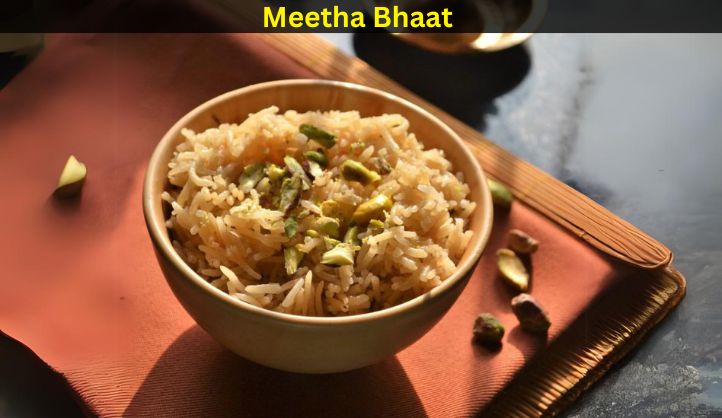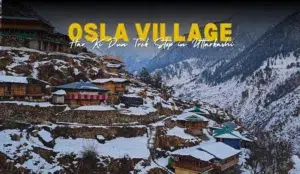Meetha bhaat, literally translating to “sweet rice” in Hindi, is a delightful and comforting dessert originating from various regions of India. This dish, made with rice, ghee, nuts, and a touch of sweetness, is a true testament to the simplicity and elegance of Indian cuisine.
There are regional variations to meetha bhaat, each boasting its unique flavor profile. In Uttarakhand, the heart of the Himalayas, meetha bhaat is traditionally prepared with local brown rice, slow-cooked with ghee, cardamom, and jaggery for a rich, earthy sweetness. Gujarat, on the other hand, offers a sweeter version that uses white rice, flavored with saffron and garnished with chopped nuts for a festive touch.
A Sweet Journey Through Time
Meetha Bhaat’s origins are shrouded in the mists of time, but its connection to India’s rich agricultural heritage is undeniable. Rice, a staple grain in the Indian subcontinent, finds its way into both savory and sweet preparations. Meetha Bhaat likely emerged as a way to utilize leftover rice, transforming it into a festive treat by adding readily available sweeteners like jaggery or palm sugar.
Historical accounts suggest that sweet rice dishes have been enjoyed in India for centuries. The Mughal era, known for its elaborate culinary traditions, might have seen Meetha Bhaat evolve with the inclusion of nuts, spices, and dried fruits.
The Cultural Significance of Meetha Bhaat
Meetha Bhaat transcends its role as a dessert. It’s woven into the cultural fabric of India, associated with festivals, celebrations, and everyday life.
-
Festivals: During festive occasions like Makar Sankranti and Diwali, Meetha Bhaat finds a special place on the table. It symbolizes sweetness and prosperity, adding a touch of joy to the celebrations.
-
Religious Offerings: In some regions, Meetha Bhaat is offered as prasad (a sacred offering) to deities. This reflects the association of sweetness with purity and auspiciousness.
-
Comfort Food: Meetha Bhaat’s simple preparation and comforting flavors make it a go-to dish for many families. It’s a quick and delightful way to end a meal or satisfy a sweet craving.
The Art of Making
Ingredients
- 1 cup basmati rice
- 2 tablespoons ghee
- 2 cardamom pods
- ¾ cup jaggery (or sugar to taste)
- ½ cup chopped nuts (cashews, pistachios, or almonds)
- 1 cup water
Instructions
- Rinse the basmati rice thoroughly. Soak for 15 minutes.
- Heat ghee in a pan over medium heat. Add cardamom pods and saute for a few seconds until fragrant.
- Drain the soaked rice and add it to the pan. Saute for 2-3 minutes.
- Pour in the water and bring to a boil. Reduce heat, cover the pan, and simmer for 15 minutes, or until the rice is almost cooked.
- Grate the jaggery or use powdered sugar. Add it to the rice along with the chopped nuts. Stir gently to combine.
- Cover the pan and cook on low heat for another 5-7 minutes, or until the rice is fully cooked and the jaggery has melted.
- Remove from heat and let it cool slightly. Serve warm or chilled, garnished with additional nuts if desired.
Some Other dishes of Uttarakhand
Baadi
This Garhwali specialty is a quick and wholesome dish made with buckwheat flour cooked in boiling water. Served with ghee, it’s a hearty and nutritious option.
Dubuk
A protein-packed Kumaoni dish made with sprouted lentils (often black gram or lentil mash) simmered with spices and ghee. It’s a flavorful and healthy addition to any meal.
Kafuli
Kafuli is a vibrant green dish that features a blend of spinach, fenugreek leaves, and sometimes other greens like mustard leaves. Cooked with minimal spices, it’s a powerhouse of nutrients and a perfect winter warmer.
Aloo Ka Jhol
Aloo Ka Jhol is a simple yet flavorful tomato and potato curry, seasoned with everyday spices like turmeric, coriander, and chili powder. It’s a comforting and versatile dish enjoyed with rice or rotis.
Kandali Ka Saag
Kandali Ka Saag is a unique dish that features the wild mountain herb known as Kandali, cooked with spices and sometimes potatoes. It offers a distinct earthy flavor and is a local delicacy.
Chainsoo
Chainsoo is a Kumaoni dish made with fermented red kidney beans, cooked with spices and ghee. The fermented beans add a tangy flavor and probiotic benefits.
Phaanu
This Garhwali specialty is a hearty lentil soup made with a combination of different lentil varieties. It’s a protein-rich and flavorful dish, perfect for a cold mountain day.
A Sweet Ending
Meetha Bhaat’s journey transcends its role as a dessert. It’s a testament to India’s rich culinary heritage, adaptability, and love for sweet flavors. From its historical roots to its regional variations and cultural significance, Meetha Bhaat offers a window into the heart of India.
Whether you savor the earthy sweetness of Uttarakhand’s take or indulge in the creamy richness of Gujarat’s version, Meetha Bhaat promises a heartwarming and delicious experience. So, the next time you crave a sweet treat, embark on your own Meetha Bhaat adventure. Explore regional variations, experiment with flavors, and create memories that are as sweet as the dish itself.
FAQs About Meetha Bhaat
1. What does Meetha Bhaat mean?
Meetha Bhaat translates literally to “sweet rice” in Hindi, perfectly capturing the essence of this dish.
2. What are the regional variations of Meetha Bhaat?
The beauty of Meetha Bhaat lies in its adaptability.
- Uttarakhand: Features local brown rice varieties cooked with ghee, cardamom, and jaggery.
- Gujarat: Leans towards a richer profile with nuts, raisins, milk/condensed milk, sugar, and cardamom.
- Rajasthan: Includes fennel seeds, cinnamon, sugar, ghee, and sometimes dry fruits.
- South India: Sometimes takes the form of Pongal, a sweet rice dish with jaggery, coconut milk, and lentils.
3. Is Meetha Bhaat difficult to make?
A: Not at all! Meetha Bhaat is a relatively simple dish to prepare. The basic recipe involves cooking rice with ghee, sweetener (sugar or jaggery), and spices like cardamom. You can find variations online or in cookbooks.
4. What occasions is Meetha Bhaat served for?
Meetha Bhaat graces tables for various occasions
- Festivals: Makar Sankranti and Diwali are some festivals where Meetha Bhaat symbolizes sweetness and prosperity.
- Religious Offerings: In some regions, it’s offered as prasad (a sacred offering) to deities.
- Comfort Food: A quick and delightful way to end a meal or satisfy a sweet craving.





